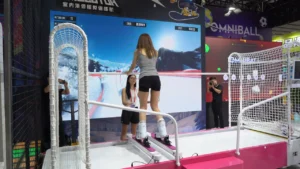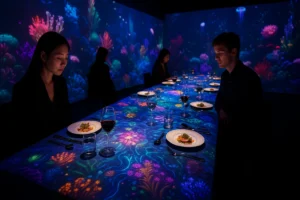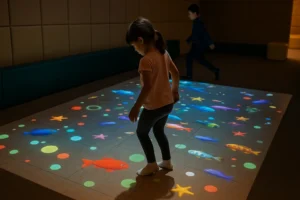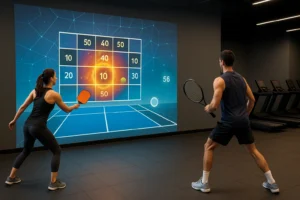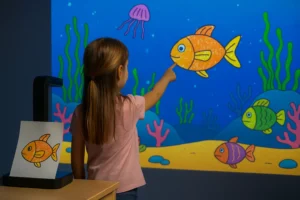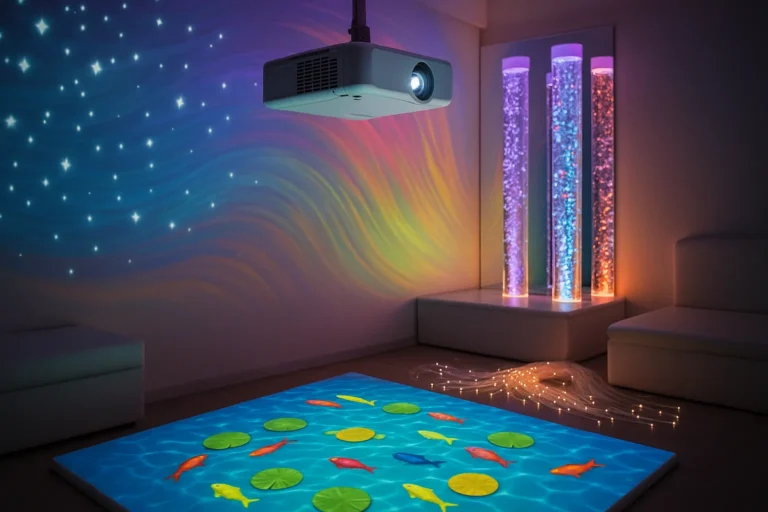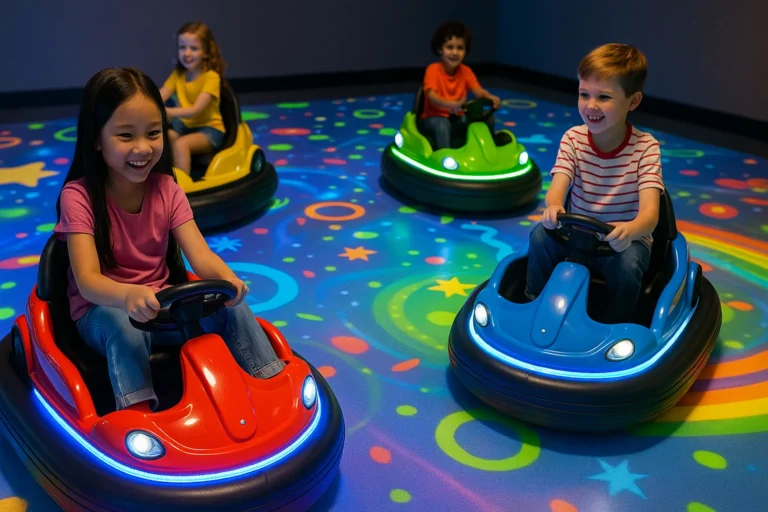The Growing Need for Sensory Engagement in Senior Living
As the global population ages, the demand for innovative solutions to enhance the quality of life for seniors continues to rise. One such solution is the interactive sensory floor and wall projection system—a dynamic, touch-responsive technology that turns ordinary surfaces into immersive play and therapy spaces.
🎮 What Are Interactive Sensory Floor & Wall Projections?
A System Designed for Cognitive and Physical Stimulation
Interactive sensory projection systems are made up of projectors, motion sensors, and custom software that projects interactive images and games onto floors, walls, or tables. When a senior moves, waves a hand, or steps on the projection, the system responds—creating a sense of cause and effect that’s especially stimulating for those with cognitive challenges like dementia or Alzheimer’s.
🔹 Key Features:
- Motion-sensitive responses
- Customizable games and visuals
- Multi-user or individual interaction
- Wheelchair-accessible designs
These systems are widely adopted for interactive sensory table projection installation in therapeutic care rooms, activity centers, and even individual nursing home rooms.

🧓 Why Are They Effective for Seniors with Dementia?
A Game That’s More Than Just Play
Interactive projection games are specifically designed for seniors living with dementia, combining movement, memory, and visual engagement. Studies show these systems improve:
- Hand-eye coordination
- Social interaction among residents
- Cognitive responsiveness
- Mood and emotional well-being
🎯 Engaging Examples:
- Butterfly or flower trails that react to hand gestures
- Puzzle-solving projections using foot movement
- Nostalgic music games linked with motion-based lights
These are not just digital games—they’re therapeutic tools backed by behavioral science and elderly care research.
🏥 How Are These Systems Installed in Nursing Homes?
Turning a Room Into a Multi-Sensory Environment
Installing interactive sensory machines in nursing home rooms for seniors is a seamless process. Most systems are plug-and-play, requiring minimal technical knowledge. However, professional setup is often recommended for optimal performance.
🛠️ Installation Considerations:
- Ceiling-mounted or wall-mounted projectors
- Anti-glare flooring or wall paint
- Room layout to accommodate mobility aids
- Sound configuration for hearing-impaired residents
Nursing homes can choose from portable units or fixed installations based on space and budget
🧩 What’s Next in the Evolution of Senior Sensory Games?
The Hottest Trends in 2025
As interactive systems become more intelligent and AI-driven, expect features like:
- Personalized game selection based on user response history
- Multi-sensory integration (touch + sound + vibration)
- Group therapy scenarios via projection multiplayer games
- Remote caregiver analytics to track progress and engagement
These advancements are turning traditional activity rooms into the hottest tech-enhanced therapy spaces in senior care facilities around the world.
Typically, 1–3 hours for portable units and 1–2 days for ceiling-mounted or fixed installations.
Yes, most systems are designed to be wheelchair-accessible and adaptable to different mobility levels.
In many countries, yes. Some non-profits and health departments offer grants to nursing homes for implementing dementia-friendly technologies.



